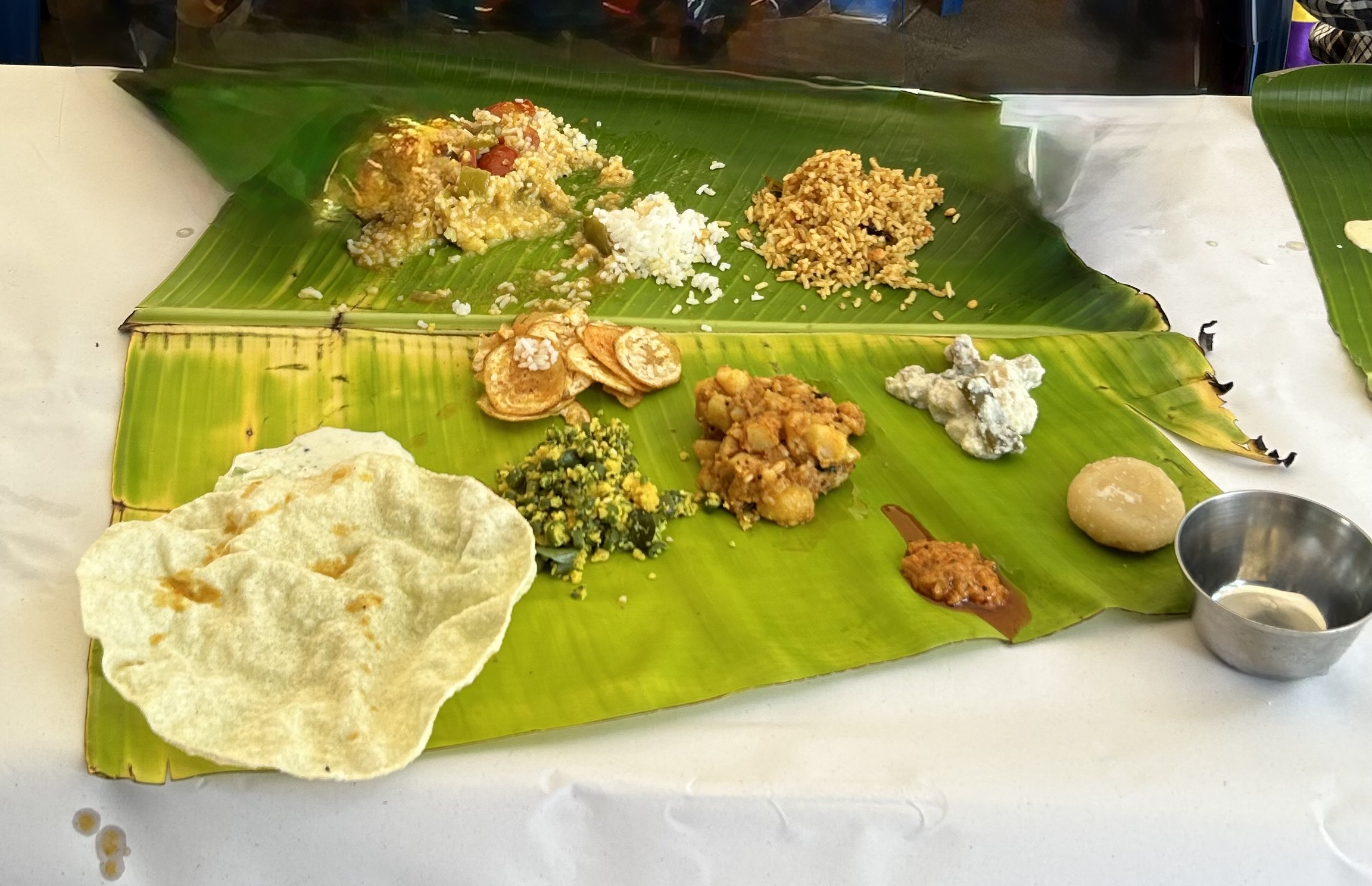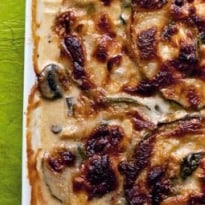Traditional lasagne can do with a bit of creative retouching - even by using layers of marrow instead of pasta.
It has been seven years, almost to the day, since I made lasagne. Not lasagne as in the flat sheets of pasta, but the layered dish of ground meat, béchamel sauce and flat pasta correctly known as lasagne al forno. With its long-simmered beef ragù, thoughtfully seasoned white sauce and homemade rolls of pasta it tends to be a dish we leave to restaurants rather than make at home.
Of course there are other versions - contemporary, fun, often a little contrived - where the pasta will turn up on a plate with an original topping. Beetroot and goat's cheese is one that springs to mind. Fine, if that is what you were expecting.
There was a point in my life when I probably made about a hundred portions of this dish, the traditional ragù-filled version, a week. The watchpoint is to make certain the meat is fried quickly over a high heat and that it browns deliciously. The recipe fails when the meat is allowed to steam as it cooks over too low a heat or is moved around the pan too much by a fanatically stirring cook.
I depart from tradition in avoiding the addition of tomato purée, always an ingredient I can live without, and by making the dish as much about the season's mushrooms as about the meat, adding them in almost equal quantity. I also use lamb rather than the more popular beef, simply because I prefer the flavour.
The result - savoury, creamy, verging on the soupy, with a top crusted and risen like that of a long baked rice pudding - is enough to convince me that recipes like this are well worth the trouble. You can cheat without things coming to grief: fresh pasta saves pre-cooking the dried variety, and ready-made Italian béchamel sauce is passable in a dish as complex as this. If you make your own, then use 30g each of flour and butter to form a roux, then introduce 400-500ml of milk over a moderate heat, letting the sauce cook for a good 15-20 minutes on a very low heat.
There was another layered dish on the table this week, an al forno-inspired recipe deliberately designed to use up some of the marrows that appear like triffids in the vegetable box and allotment at this time of year. I used mushrooms, mozzarella and masses of basil in the centre, with the rest of the filling being mostly mushrooms. We ladled the dish out on to our plates like a creamy soup and everyone asked for more. Marrow always produces a lot of water as it cooks, and I found a way round this by cutting it into thin slices and frying them in a pan first, letting them drain on kitchen paper, then using as I would pasta in a traditional lasagne. I used a vegetarian filling, but the lamb filling in the previous recipe would have worked equally well.
Lamb and mushroom lasagne
Serves 4
a large onion
butter 40g
garlic 2 large cloves
minced lamb 500g
chestnut mushrooms 200g
stock 500ml
fresh lasagne sheets 200g
béchamel sauce 500ml
grated parmesanPeel the onion, roughly chop it and put it into a deep heavy-based pan with the butter and let it cook over a medium heat. Peel and crush the garlic and add to the onion, stirring occasionally till the onion has softened and is beginning to colour lightly.
Push the onion to one side and add the minced lamb, leaving it be, without stirring, for a few minutes till it has started to brown. Stir and continue cooking, mixing the onion in as you go. Set the oven at 200C/gas 6.
Chop the mushrooms quite finely and add them to the pan, continue cooking, stirring occasionally, till all is golden, seasoning generously with salt and black pepper.
Pour in the stock, mix thoroughly, then leave to simmer on a moderate to low setting for a good 20 minutes till it is thick and rich.
Lightly butter a shallow baking dish, place a sheet of lasagne on the base, then half of the mince. Place another sheet of lasagne on top then the remaining mince followed by a third lasagne sheet then the béchamel sauce. Grate a thin layer of parmesan over the top and then bake for about 40 minutes till lightly crisp and brown on top (I like mine very brown, like the skin on a rice pudding).
Marrow gratin
Some might be tempted to call this a lasagne of marrow because of its layers. But to my mind it is more of a gratin. Either way, it will be useful to those who have a marrow to deal with, and it is gloriously soupy and rich.
Serves 4-6
marrow 800g peeled weight
a little butter and oil
small mushrooms 300g
basil leaves 15g
large ball of mozzarella
béchamel 500ml
grated parmesanRemove and discard the seeds and fibres from the marrow, then slice thinly into rounds about the thickness of a pound coin. Warm a little butter and oil in a shallow pan, then as it starts to bubble, lower in a few of the marrow slices in a single layer and let them colour a little on the underside. Turn the marrow over and cook the other side - they should be translucent and tender, but not brown - then remove them and drain on kitchen paper.
Continue this process with the rest of the marrow slices.
While the marrow slices are cooking, slice the mushrooms thickly. When the marrow has finished cooking, add the mushrooms to the pan, with a little more butter if necessary, season them with salt and pepper and then, as they are approaching doneness, add the basil leaves and stir them in. Once they have wilted remove the pan from the heat.
Set the oven at 200C/gas 6. Cover the base of a large, shallow baking dish with half of the marrow slices, then add half of the mushroom and basil mixture. Tear the ball of mozzarella into pieces and dot over the mushroom mixture. Spoon half the béchamel sauce over the surface then another layer of marrow, seasoning as you go. Finally top with the remaining béchamel sauce and a generous dusting of grated parmesan.
Bake for about 40 minutes till bubbling, the top gently browned.
Email Nigel at nigel.slater@observer.co.uk or visit guardian.co.uk/profile/nigelslater for all his recipes in one place
Cream of the crop: Nigel Slater's marrow gratin. Photograph: Jonathan Lovekin for the Observer






